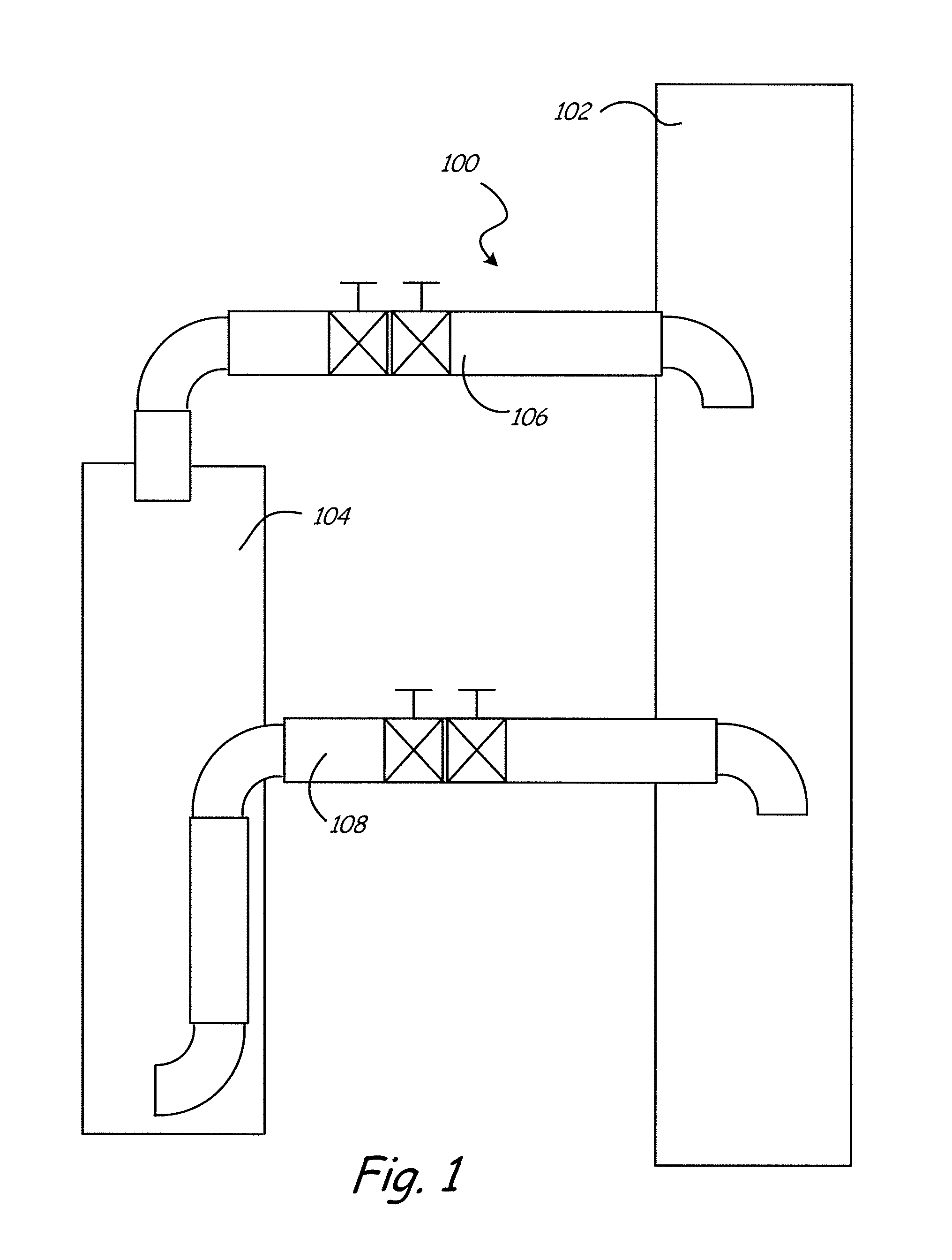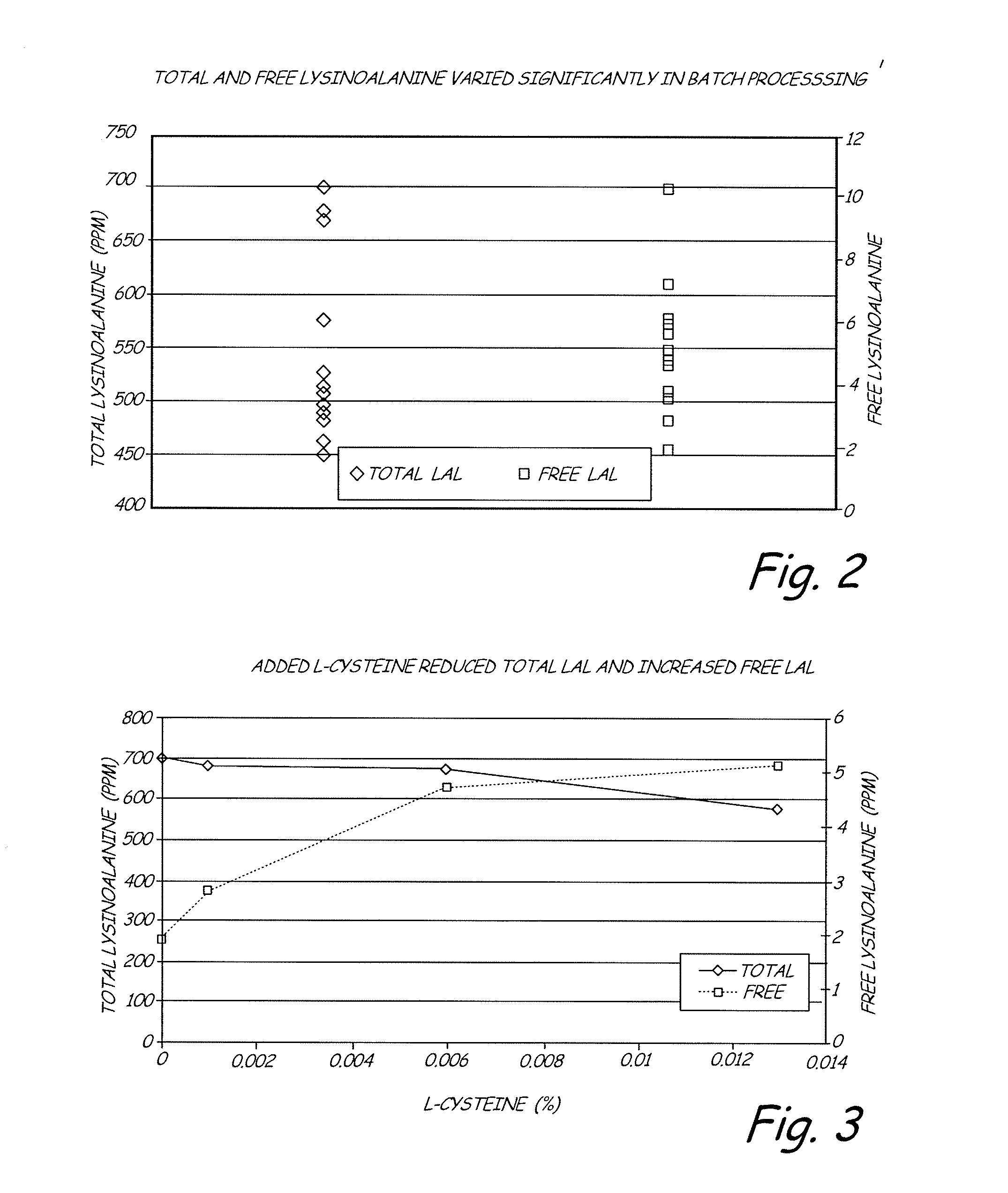Grain product with increased soluble fiber content and associated methods
a technology of soluble fiber and grain products, applied in the field of food products, can solve the problems of reducing the overall value of the intended end user, growing undesirable against ingesting dietary supplements, pharmaceutical treatments or other supplement-type products, and certain supplements may actually remove valuable macronutrients and micronutrients from the system, and achieves the effect of increasing the content of soluble fiber and high shear
- Summary
- Abstract
- Description
- Claims
- Application Information
AI Technical Summary
Problems solved by technology
Method used
Image
Examples
example 1
Batch Processing with Low Shear Mixing
[0068] In specific examples, the dry ingredients, wheat bran (approximately 90-98% on a dry weight basis in this example is 10 pounds) and calcium hydroxide (2-10% on a dry weight basis and approximately 0.8 pounds for this exemplary process) are mixed together are then added into the cooker. The cooker has an initial shell temperature of around 21° C.-24° C. (70-75° F.).
[0069] The wheat bran is then steamed / cooked in a pressurized vessel. For the present example, the heating / steaming is done in three stages or durations of 10 minutes, 10 minutes and 20 minutes. During the heating / steaming, the pressure in the vessel is maintained at around 275 kPa to 350 kPa (25 to 36-psig). The cooking / steaming temperature ranges from about 130° C. to 138° C. and the heating / steaming is done in a batch cooker designed and used in the production of ready to eat (“RTE”) cereals. The contents are then discharged from the cooker. The batch after removal from the...
example 2
Addition of L-Cysteine During Batch Processing Example 2—Addition of L-Cysteine During Batch Processing
[0083] In this example, LAL levels are evaluated following the addition of L-cysteine to the hydration mixture.
[0084] The batch process described in the first portion of Example 1 was repeated with L-cysteine added to the hydration mixture. The results for total LAL and free LAL for three different concentrations of L-cysteine in % are plotted in FIG. 3. From these results, the addition of L-cysteine lowers the total LAL levels, but raises the free LAL levels.
example 3
Wheat Bran Hydrolysis Using Extrusion
[0085] In this example, results are presented using an extrusion based cooking process that yield improved bran products with increased soluble fiber content.
[0086] The apparatus is shown schematically in FIG. 1. Apparatus 100 comprises a Buhler 62 twin-screw extruder 102, an adiabatic flow vessel 104, a channel connection 106 from the extruder to the vessel and channel 108 from the vessel back to the extruder. The distance between screw tips in extruder 102 is 62 millimeter. Extruder 102 is a co-rotating, interesting, modular twin-screw extruder. Adiabatic flow vessel 104 is a 5 foot long, 10 inch diameter insulated vessel with a high volume that provides an effective additional residence time. The twin-screw extruder provides mixing, pumping and heat transfer.
[0087] The extruder operation is carried out in separate temperature-controlled extruder zones that are fed by several separate input streams. The temperatures in the different zones of...
PUM
 Login to View More
Login to View More Abstract
Description
Claims
Application Information
 Login to View More
Login to View More - R&D
- Intellectual Property
- Life Sciences
- Materials
- Tech Scout
- Unparalleled Data Quality
- Higher Quality Content
- 60% Fewer Hallucinations
Browse by: Latest US Patents, China's latest patents, Technical Efficacy Thesaurus, Application Domain, Technology Topic, Popular Technical Reports.
© 2025 PatSnap. All rights reserved.Legal|Privacy policy|Modern Slavery Act Transparency Statement|Sitemap|About US| Contact US: help@patsnap.com


